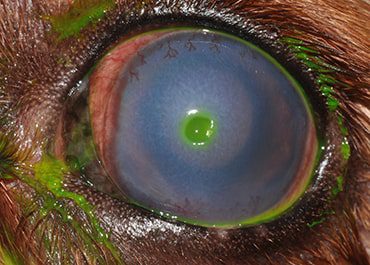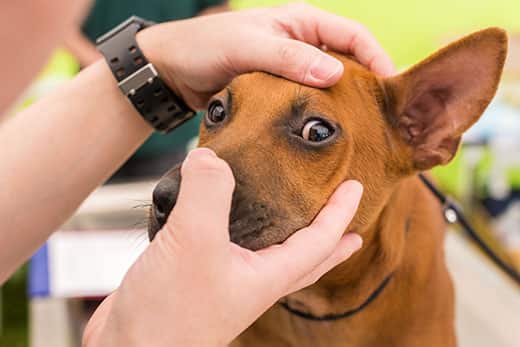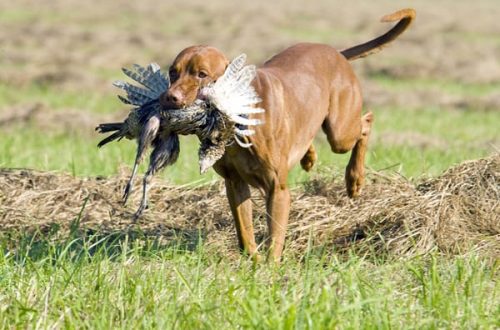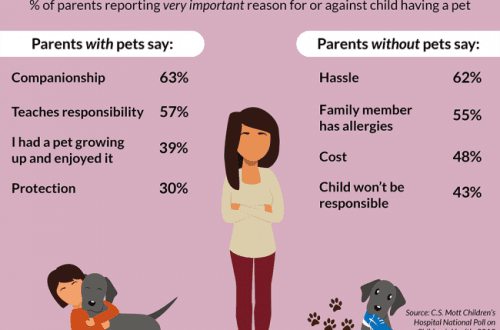
Corneal ulcer in a dog: treatment and prevention
Although some breeds are more prone to developing corneal ulcers, in general all dogs are at risk. Further – about the causes of this condition and methods of its treatment.
Contents
What is a corneal ulcer in a dog
The cornea is the transparent outer layer at the front of the eye that helps hold its jelly-like structure. The cornea is made up of tissues that are tough enough to withstand light impacts and minor trauma, yet thin enough to allow light to pass through unobstructed, providing excellent vision.
The cornea is covered with a thin layer of cells called corneal epithelium. Violation of this superficial layer, followed by damage or displacement of its cells, leads to an injury called a corneal ulcer.
Causes of corneal ulcers in dogs
The superficial layer of the cornea can be damaged in the following cases:
- Chemical burns. They can be caused by shampoos, skin medications, ear cleaners, etc.
- Scratches. A dog may accidentally scratch its eye or damage it during active play or fights.
- Blunt injuries. They can be obtained, for example, as a result of a car accident or a collision with a stationary object.
- Penetrating trauma. They can be applied with sticks, sharp toys, claws or teeth.
- Chafing. Foreign bodies under the eyelid, dry eyes, eyelid problems, or itching in the eye can damage the cornea.
An eye ulcer in a dog can also develop when the corneal epithelium is damaged or infected. Minor injuries can lead to complications if they become infected. Primary infections can also occur in the healthy eye due to certain aggressive viruses and fungi.
In addition, in some cases, a corneal ulcer develops in dogs for an unspecified cause. This condition is called slowly progressive ulceration or spontaneous chronic defects of the corneal epithelium. It mainly develops in dogs older than six years.

Signs and Diagnosis of Corneal Ulcers in Dogs
The most common signs of a corneal ulcer are:
- the dog blinks frequently or closes the affected eye;
- there is increased lacrimation or discharge from the eye;
- there is redness or swelling of the tissues surrounding the eyes;
- poor appetite;
- the pet is trying to hide;
- dog rubs eyes with paws.
Veterinarians can easily diagnose corneal ulcers because some pets show obvious changes on the surface of the eye. Most often, however, a simple diagnostic test is performed using a fluorescein dye that is applied to the cornea to check for damage.
Risk Factors
Corneal ulcers can develop in dogs of any breed at any stage of life. However, younger animals tend to be more likely to be injured resulting in corneal ulcers, as they generally get into trouble more often.
Dogs that are born with bulging eyes, dry eyes, or eyes with eyelids of a shape or structure that makes them prone to dry eyes or friction injuries, such as the Shar-Pei, are more prone to corneal ulcers. Slowly progressive ulcers are also common in Golden Retrievers and Boxers.
Most of the genetic conditions that predispose to corneal ulcers occur in middle-aged and older dogs.
Corneal ulcers in dogs: how serious is the problem?
The appearance of ulcers on the cornea should not cause panic. However, they are known to be very painful. It is important at the first suspicions to take the dog to the veterinarian. If left untreated, corneal ulcers can lead to loss of vision and, in rare cases, the need to remove the eye.
Corneal ulcer in a dog: treatment
Standard treatment for a dog with a corneal ulcer involves taking antibiotics and topical pain relievers—eye drops—several times a day. Sometimes oral and even injectable drugs are prescribed. Appropriately treated pets with corneal ulcers retain their vision in almost all cases.
If the cornea is damaged extensively, surgery may be required. Depending on the severity of the corneal ulcer, your veterinarian may recommend that you see a veterinary ophthalmologist.
Home care for a dog with a corneal ulcer
It can be difficult to take all the medicines prescribed by the veterinarian, but all instructions must be strictly followed.
It is important not to allow the dog to rub the affected eye. To do this, put on her a high-quality protective collar and limit her physical activity.
Corneal ulcer treatment takes time, effort and a lot of patience, but ultimately has a high success rate. In addition, prophylaxis in dogs that are predisposed to visual problems usually also gives good results.
Finally, remember that proper nutrition is critical to a dog’s overall eye health. Pets need a balanced and complete food that promotes proper eye development in puppies and provides sufficient support for the health of their eyes in adulthood and old age.





